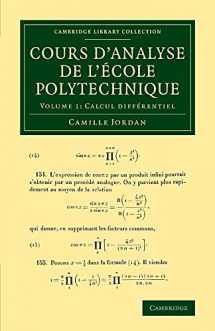
Cours d'analyse de l'ecole polytechnique: Volume 1, Calcul différentiel (Cambridge Library Collection - Mathematics) (French Edition)
Book details
Summary
Description
One of the great algebraists of the nineteenth century, Marie Ennemond Camille Jordan (1838-1922) became known for his work on matrices, Galois theory and group theory. However, his most profound effect on how we see mathematics came through his Cours d'analyse, which appeared in three editions. Reissued here is the first edition, which was published in three volumes between 1882 and 1887. While highly influential in its time, it now appears to us a transitional work between the partially rigorous 'epsilon delta' calculus of Cauchy and his successors, and the new 'real number' analysis of Weierstrass and Cantor. The first two volumes follow the old tradition while the third volume incorporates a substantial amount of the new analysis. Ten years later, the even more influential second edition followed the new point of view from its start. Volume 1 (1882) covers differential calculus.


We would LOVE it if you could help us and other readers by reviewing the book
Book review



